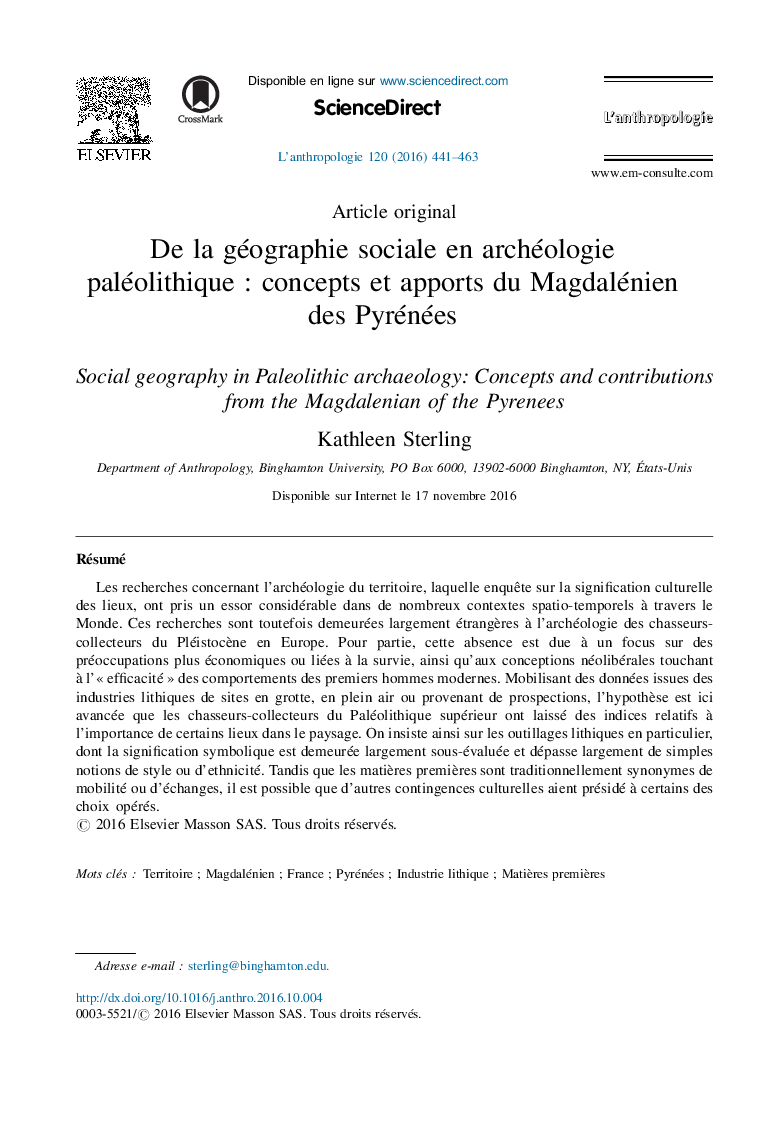| Article ID | Journal | Published Year | Pages | File Type |
|---|---|---|---|---|
| 7440029 | L'Anthropologie | 2016 | 23 Pages |
Abstract
Landscape archaeologies that pay attention to cultural importance of place have become increasingly common in recent years in many parts of the world. However, these approaches have largely failed to make inroads into Pleistocene European hunter-gatherer archaeology. This is partly due to a focus on economics, survival, and neo-liberal assumptions of “efficiency” in early modern human behavior. With evidence of lithic use drawn from cave sites, survey, and open-air excavation, I argue that Upper Paleolithic hunter-gatherers left clues to the importance of certain places in the landscape. Lithic tools in particular have been undervalued for their symbolic meaning, which goes well beyond style and ethnicity models. Raw material has been seen as evidence of mobility and trade, but possible cultural motives behind material choices have been downplayed or ignored.
Keywords
Related Topics
Social Sciences and Humanities
Arts and Humanities
History
Authors
Kathleen Sterling,
